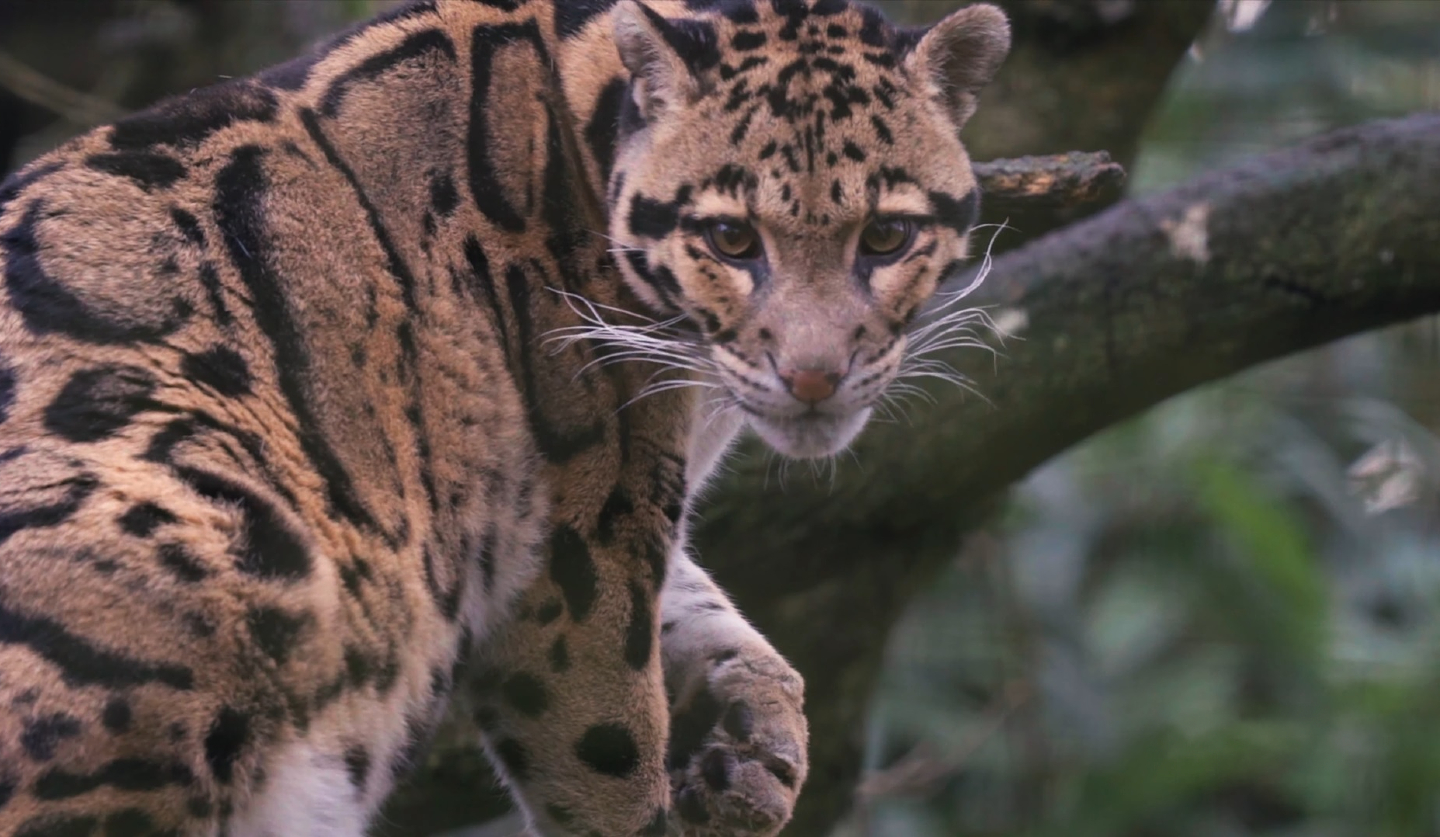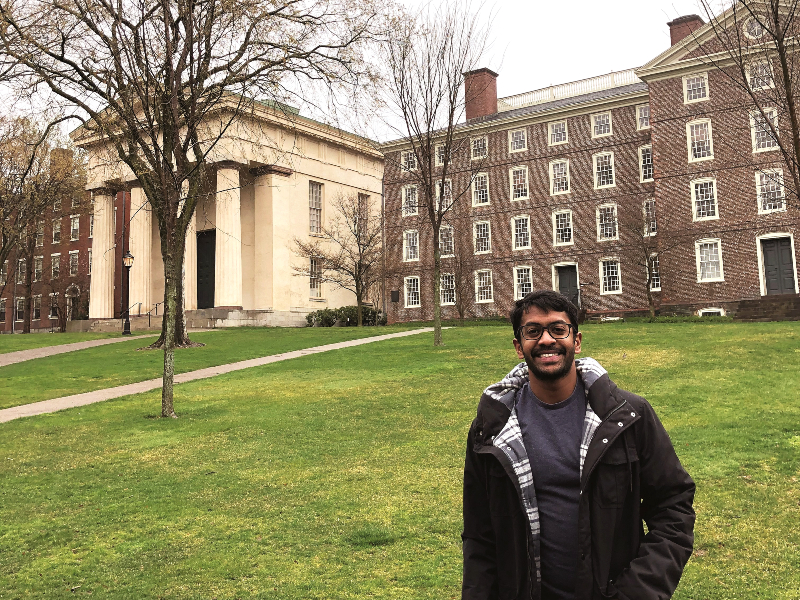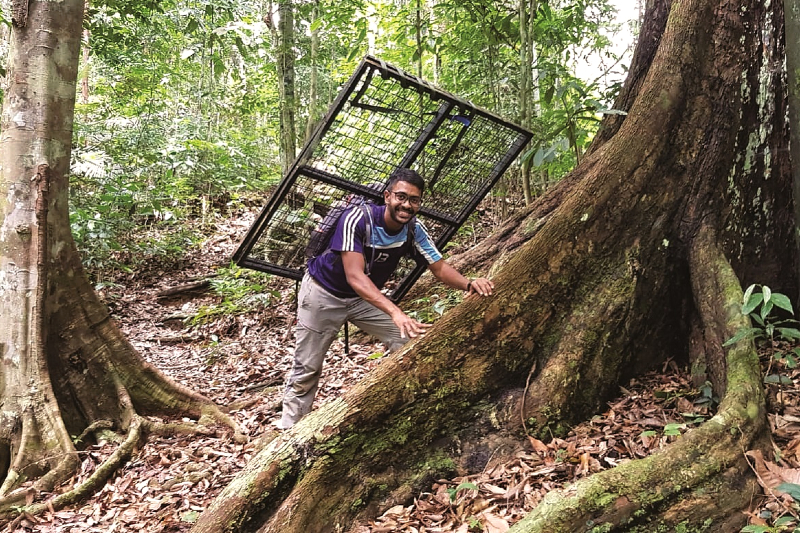
Habitat defragmentation is the biggest threat to Borneo's clouded leopards (Photo: WildCRU)
In the second minute of the Jungles episode of David Attenborough’s Our Planet series, a Sunda clouded leopard silently pads over a tangle of exposed tree roots as it makes its way through the rainforest. Do not let its small and lithe figure fool you — our cuddly friend here is pure muscle and coolly vicious with the largest jaw of any big cat proportionate to its size.
Little is known of this elusive species. The same instincts that help it evade poachers also puts it out of the reach of researchers such as those who are part of the Bornean Carnivore Programme, whose camera traps in Tawau, Sabah, secured the footage featured in the documentary. Run by the University of Oxford, the programme has been studying the native carnivores of Borneo for over a decade to answer some of the most fundamental questions about their population and impact.
“From an ecosystem point of view, when you speak about conservation, not all animals are equal, unfortunately,” says research manager Chrishen Gomez. To maximise resources, animals chosen for study are often those with a knock-on effect, whereby their study and protection creates similar impact for other animals whose fates are tied to theirs.
“These are identified as keystone species without whom an ecosystem will collapse,” continues the wildlife biologist. “Intuition would have you believe the bottom of the food chain was the most important for the chain’s survival, but modern science tells us predators have a disproportionate effect in maintaining an ecosystem. That’s how we justify studying carnivores and investing in the protection of predators such as the Sunda clouded leopard.”
img_2914_1.jpg

Funnily enough, it is not the loss of habitat or poaching that is the biggest threat to this leopard, found only on Borneo, but habitat defragmentation. There is technically sufficient forest cover in Sabah to support a healthy population of wildlife, but what was once a contiguous forest, which provides continuous coverage, has become fragmented by agricultural activities or development.
“The central forest spine in Peninsular Malaysia is a contiguous forest, which is good because a tiger up north can find its way to the south. This promotes population growth as mating along the way creates a genetically diverse, dynamic and resilient population group,” explains Gomez, who at 25 was the youngest winner of the Merdeka Award Grant for International Attachment 2019. Described as a young Attenborough with his exuberant passion for wildlife, he is slated to begin a PhD programme at Oxford under the Wildlife Research and Conservation unit.
“The opposite happens when animals are isolated in forest islands or fragmented forests — they breed among themselves and eventually go extinct with this genetic isolation. The last five years of our study have focused on collaring Sunda clouded leopards to study their movements in real time and understand how they cross fragmented forests. We may be the only group in the world attempting this because it is an insane amount of work.”
That may be an understatement. Collaring a single leopard takes about six months, from identifying the route of the elusive animal in the remote and isolated forests to preparing for every possible contingency to guarantee its health and safety.
“We haul the heavy cages on our backs, navigate through the spiny and thorny forests, and then monitor the trap 24/7 once it’s set up — because it is all systems go as soon as we catch one,” says Gomez. “We immediately hike over to the site, which can take upwards of five hours, and start the tranquilisation and collaring process. As we are working in the wild, rather than anaesthetising in a laboratory, where we can monitor better, we have to be incredibly careful and prepared.
"This is nothing like collaring a lion in an African savannah. My colleagues there tell me it’s a one-day job that involves finding a population and tranquilising a lion from the helicopter before going down to collar it. But the work here warrants this heavy investment of time, labour and resources.”
omcl6037_1.jpg

This is because there is hope yet for the fate of the Sunda clouded leopard and its fellow animals in the Bornean ecosystem, though a ticking clock underlines the urgency of making the right choices right now.
“Malaysia is at a junction, especially still-developing places like Sabah,” says Gomez. “It has to decide if it wants to be an agrarian state or an industrial state like Kuala Lumpur. We may want to become a tourism hotspot, but the sustainability of that plan is questionable. Look what happened when Covid-19 struck — a single, prolonged event like that may have collapsed the industry. I think agriculture could be a big part of our post-Covid plan and while there is no doubt it is detrimental to the environment, there are ways to support the wildlife population through initiatives such as continuous or step stone wildlife corridors that connect patches of forests split up by plantations. That is what we are currently working on with local plantations interested in conservation.”
Unlike the mercenary image of plantation owners some people have, Gomez finds that those he collaborates with are open and receptive to such ideas.
“Planters more than most people understand the link between the land and animals, the natural supply chain of minerals that have to move around to make their plantations work. The problem is that current conversations dismiss them entirely as being detrimental. However, while they cannot compare to our primary forests, plantations are not biological deserts and we have found wildlife moving through them. You cannot invalidate the livelihoods of agricultural workers entirely — there has to be a balance of economic and conservation goals and the solution may be in the middle ground. Connectivity, for instance, could be an answer, with plantations designed with conservation in mind.”
It goes beyond plantations to encompass any form of development that would affect the natural environment. With the necessary data, organisations such as the Bornean Carnivore Programme could work with governments on modelling scenarios for development plans that minimise impact on local ecosystems.
“Something as simple as moving a road 100m further away from a river could have a huge impact on a population of elephants, for instance. But that single decision takes months of negotiations,” says the research manager. “There needs to be better cooperation between governments and conservationists. Malaysians need to ensure that the right people, who have a vision for and well-informed views on environmental management, are voted into positions of power to influence such policies.”
Malaysia relies heavily on natural resources such as energy and timber. Therefore, a large part of our economy depends on a functioning ecosystem, with indicators such as well-flowing rivers and healthy forests suggesting their sustainability in the long term. But this motivation still relies on the commodification of resources. In an ideal world, we would protect animals and the environment for their intrinsic good rather than their quantifiable economic value, says Gomez.
“This expands our way of existence tremendously and the only way we can understand this is to experience the full grandeur and splendour of nature,” he says. “The first time I saw a clouded leopard in real life, I cried. I’m not an emotional person; I’m KL-born-and-bred and grew up to value efficiency instead of sentiment like this. But seeing it in person, in the wild, was something else entirely. I couldn’t believe I share a planet with a creature as magnificent as this.
"It’s funny, I speak to renowned ecologists and geneticists from around the globe and when they find out we’re in Borneo, they are immediately envious about the natural wealth of the rainforests and the things we get to see in this part of the world. We absolutely have to protect our national treasures.”
This article first appeared on July 26, 2021 in The Edge Malaysia.


